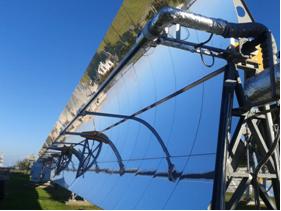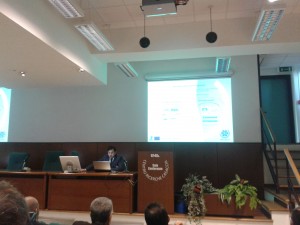The HITECO project is close to its end. Last 30th October the final workshop was carried out in ENEA facilities, near Rome. At this event, the project coordinator and several partners showed the most important tasks developed along the project and the main results obtained; insights about the future of the CSP sector, sealing systems for novel energy devices and “Industrial development driven by technology; Solar applications”, were some of the topics presented and discussed during the Conferences. Finally a technical tour was performed to show the new absorber tube placed on the test facilities and the testing operation results (http://www.hitecoproject.com/?p=971).
The last one and a half year of the project, its efforts have been focused on the development and validation of a prototype of the new concept of absorber tube for CSP that had been designed during the project. This new concept was been tested in a laboratory under off-sun conditions to analyze the thermal stability of the components and the behaviour of the new concept of vacuum chamber, providing good results in all the tests performed.
Finally, the new product was scaled and mounted on a CSP test facility placed at ENEA facilities near Rome to perform the on-sun tests of the product.
These test facilities are composed of a parabolic trough solar collector of 100m length and a molten salts management system used as heat transfer fluid along the tests. During the last year the project tasks have been focused on the manufacturing of a 100m length absorber tube to place it on those tests facilities, and the necessary efforts to adapt the supporting structure and the molten salts management system to be used to the new concept of the absorber tube.
- The new concept of absorber tube has been validated, and likewise the following goals have been confirmed: the thermo-mechanical functionality, the ability to achieve high vacuum levels and keep them under different operating conditions.
- The first tests performed showned similar heat losses to those with current tube designs; the differentiating effect is focused on the analysis of the composition and pressure of the vacuum chamber and, on the other hand, the reduction of the heat losses through the absorber tube supports. Regarding performance, as the new tube concept, it has more effective solar collection area, it is expected that in the coming weeks the improvement in performance of the new tube design compared to current designs can be confirmed.
Thanks to the HITECO project, CIDAUT has gained knowledge and a valuable insight into the CSP technologies, and has developed and validated simulation methodologies to analyze the optical, thermal and thermo-mechanical behaviour of parabolic-trough solar collectors. On the other hand, a useful analytical tool to characterize the performance of absorber tubes in parabolic solar collectors has been carried out and has been validated using CFD simulation tools and experimental results.

